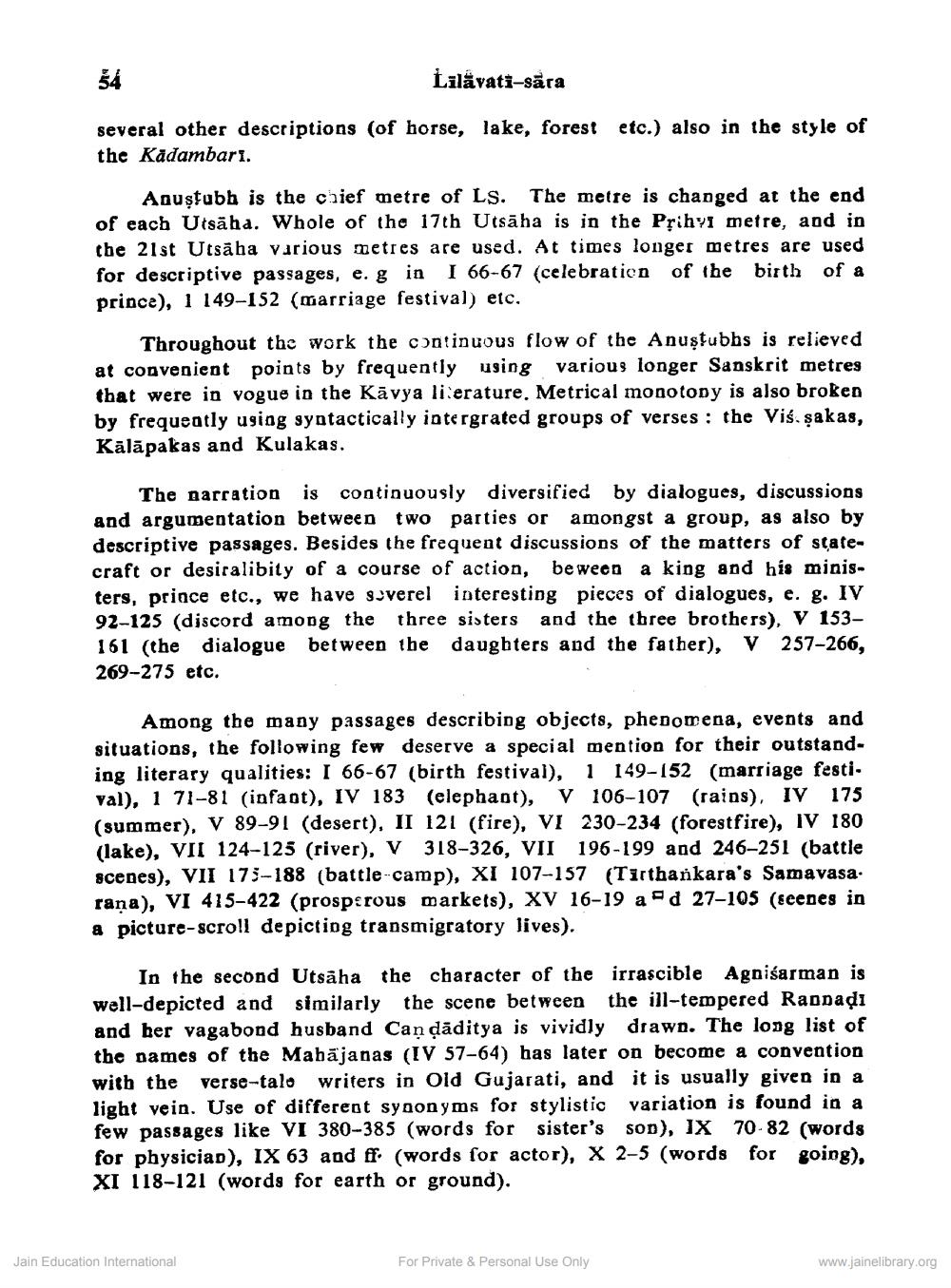________________
54
Lilavati-săra
several other descriptions (of horse, lake, forest etc.) also in the style of the Kadambar1.
Anustubh is the chief metre of LS. The metre is changed at the end of each Utsäha. Whole of the 17th Utsäha is in the Prihvi metre, and in the 21st Utsäha various metres are used. At times longer metres are used for descriptive passages, e. g in I 66-67 (celebration of the birth of a prince), 1 149-152 (marriage festival) etc.
Throughout the work the continuous flow of the Anustubhs is relieved at convenient points by frequently using various longer Sanskrit metres that were in vogue in the Kävya literature, Metrical monotony is also broken by frequently using syntactically intergrated groups of verses: the Vis. şakas, Käläpakas and Kulakas.
The narration is continuously diversified by dialogues, discussions and argumentation between two parties or amongst a group, as also by descriptive passages. Besides the frequent discussions of the matters of statecraft or desiralibity of a course of action, beween a king and his ministers, prince etc., we have severel interesting pieces of dialogues, e. g. IV 92-125 (discord among the three sisters and the three brothers), V 153161 (the dialogue between the daughters and the father), V 257-266, 269-275 etc.
Among the many passages describing objects, phenomena, events and situations, the following few deserve a special mention for their outstanding literary qualities: I 66-67 (birth festival), 1 149-152 (marriage festival), 1 71-81 (infant), IV 183 (elephant), V 106-107 (rains), IV 175 (summer), V 89-91 (desert). II 121 (fire), VI 230-234 (forestfire), IV 180 (lake), VII 124-125 (river), V 318-326, VII 196-199 and 246-251 (battle scenes), VII 175-188 (battle-camp), XI 107-157 (Tirthankara's Samavasarana), VI 415-422 (prosperous markets), XV 16-19 ad 27-105 (scenes in a picture-scroll depicting transmigratory lives).
In the second Utsäha the character of the irrascible Agnisarman is well-depicted and similarly the scene between the ill-tempered Rannadı and her vagabond husband Can daditya is vividly drawn. The long list of the names of the Mahajanas (IV 57-64) has later on become a convention with the verse-tale writers in Old Gujarati, and it is usually given in a light vein. Use of different synonyms for stylistic variation is found in a few passages like VI 380-385 (words for sister's son), IX 70-82 (words for physician), IX 63 and ff (words for actor), X 2-5 (words for going), XI 118-121 (words for earth or ground).
Jain Education International
For Private & Personal Use Only
www.jainelibrary.org




